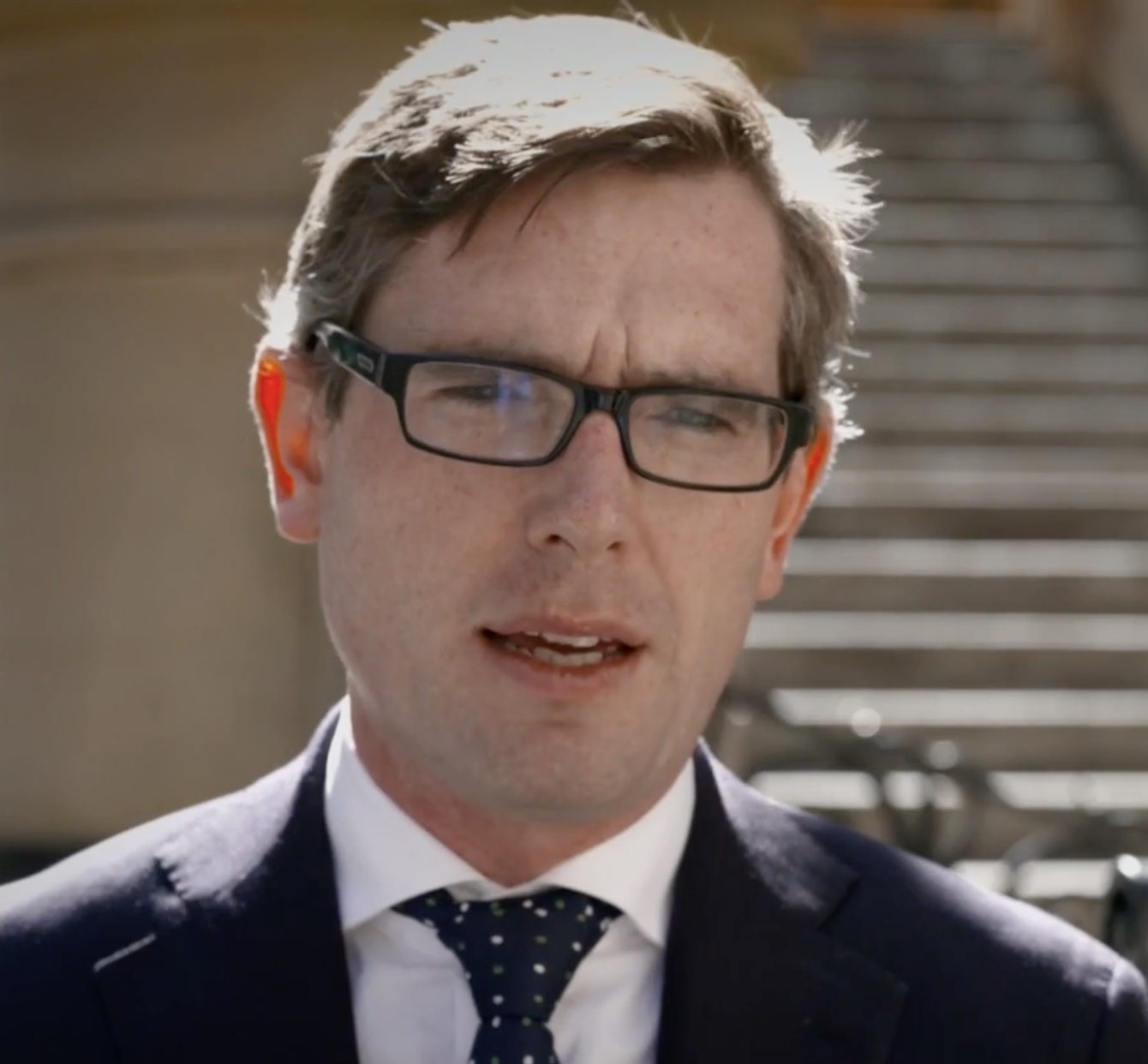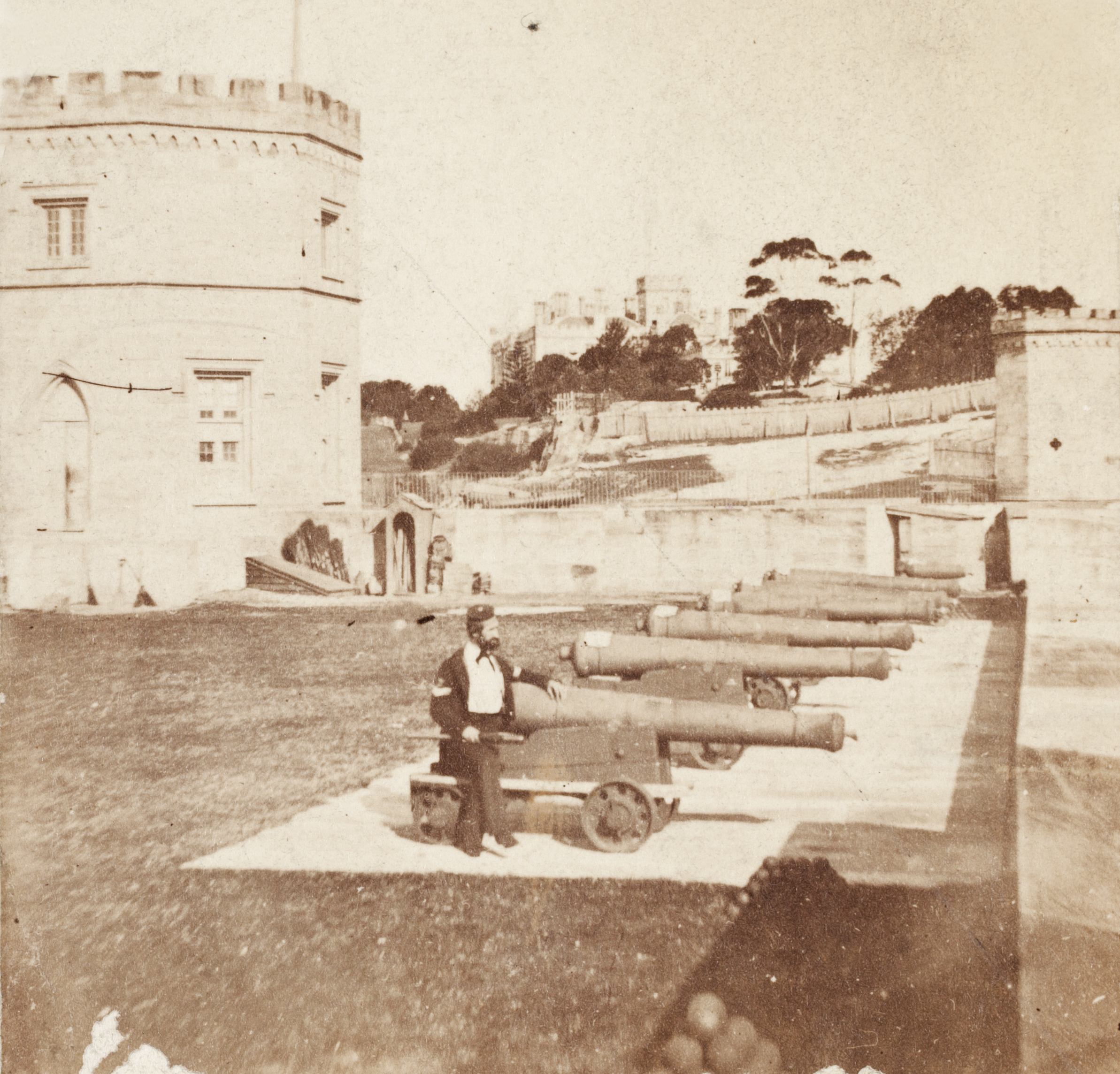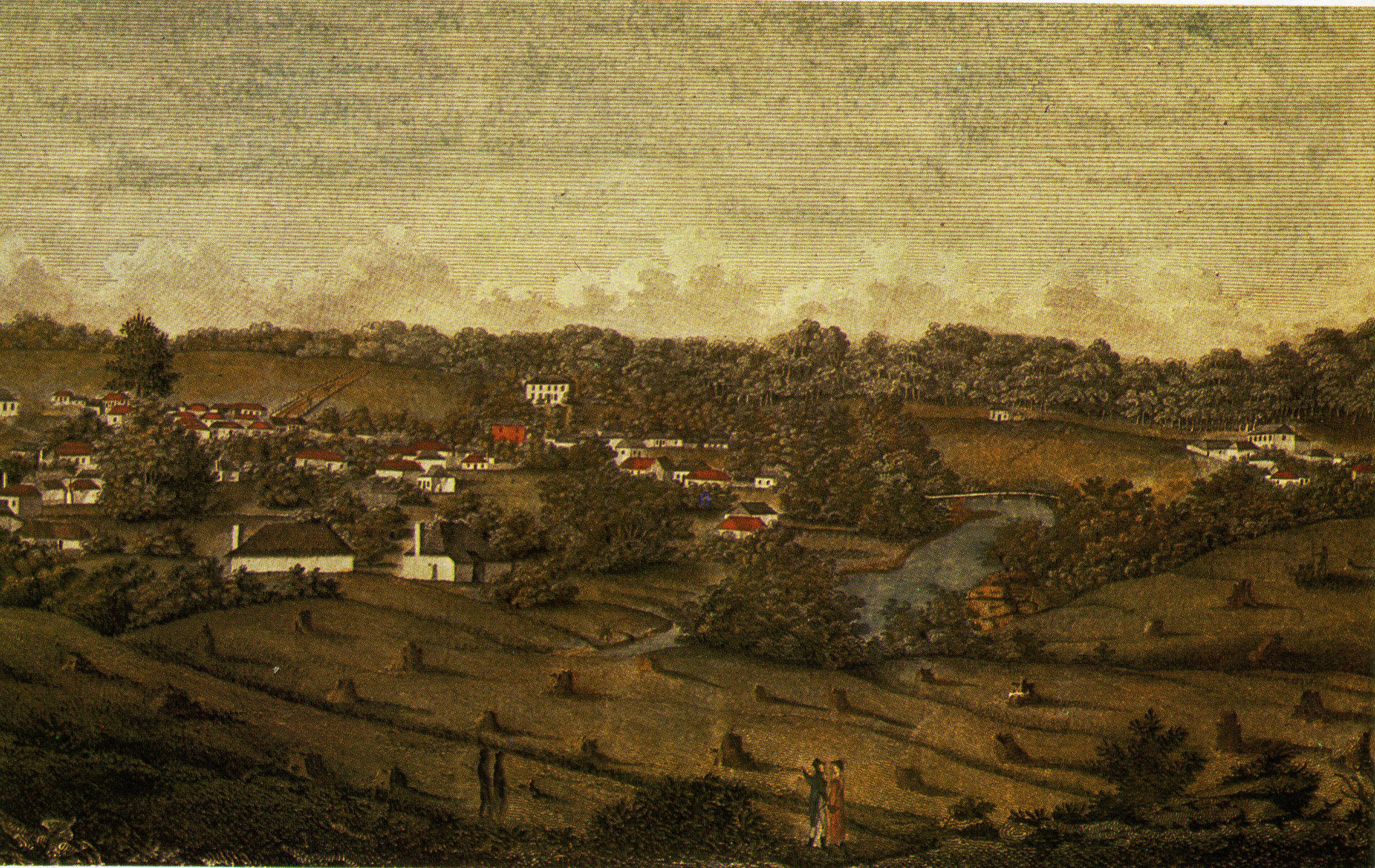|
Museum Railway Station, Sydney
Museum railway station is a heritage-listed underground commuter rail station that is located on the City Circle route at the southern end of Hyde Park in the Sydney central business district of New South Wales, Australia. The station is served by Sydney Trains T2 Inner West & Leppington and T3 Bankstown T8 Airport & South lines. The station is named after the nearby Australian Museum. It was added to the New South Wales State Heritage Register on 2 April 1999. History The need for a city rail link Railway development in Sydney began with the opening of the Sydney to Parramatta line in 1850. The terminus in Devonshire Street was, however, a considerable distance from most of the city's shops and workplaces located to the north. Disembarked railway passengers were required to either walk or be conveyed to the city centre by horse drawn and in later years steam and electrically powered trams which ran along George, Pitt or Elizabeth Streets. Throughout the second ... [...More Info...] [...Related Items...] OR: [Wikipedia] [Google] [Baidu] |
Elizabeth Street, Sydney
Elizabeth Street is a major street in the central business district of Sydney in New South Wales, Australia. The street continues south of the central business district (CBD), through the inner city suburbs of Surry Hills, Redfern and Waterloo, before terminating in Zetland. Elizabeth Street lies within the City of Sydney local government area. Description and history Elizabeth Street runs south from Hunter Street, past Hyde Park and David Jones, and reaches the CBD boundary at Central station. The street continues further south and is approximately long and passes through a mixture of residential and commercial areas. Between Eddy Avenue and Redfern Street, the street carries southbound traffic only; with Chalmers Street carrying northbound traffic. The speed limit on Elizabeth Street varies between to . Elizabeth Street was originally known as Mulgrave Street, but was renamed by Governor Lachlan Macquarie in 1810 for his second wife, Elizabeth Henrietta Campbell (1778- ... [...More Info...] [...Related Items...] OR: [Wikipedia] [Google] [Baidu] |
Railway Station
Rail transport (also known as train transport) is a means of transport that transfers passengers and goods on wheeled vehicles running on rails, which are incorporated in tracks. In contrast to road transport, where the vehicles run on a prepared flat surface, rail vehicles (rolling stock) are directionally guided by the tracks on which they run. Tracks usually consist of steel rails, installed on sleepers (ties) set in ballast, on which the rolling stock, usually fitted with metal wheels, moves. Other variations are also possible, such as "slab track", in which the rails are fastened to a concrete foundation resting on a prepared subsurface. Rolling stock in a rail transport system generally encounters lower frictional resistance than rubber-tyred road vehicles, so passenger and freight cars (carriages and wagons) can be coupled into longer trains. The operation is carried out by a railway company, providing transport between train stations or freight customer facilit ... [...More Info...] [...Related Items...] OR: [Wikipedia] [Google] [Baidu] |
King Street, Sydney
King Street is a street in the Sydney central business district in New South Wales, Australia. It stretches from King Street Wharf and Lime Street near Darling Harbour in the west, to Queens Square at St James railway station in the east. History and description King Street was named after Governor Phillip Gidley King, the third Governor of New South Wales. The Watsons Bay tramway ran down King Street until its closure and replacement by buses in 1960.D. Keenan: ''Tramways of Sydney''. Transit Press 1979 King Street provides the northern border of Pitt Street Mall. 25 Martin Place is a skyscraper that sits on the corner of Castlereagh Street. Other prominent buildings along King Street include the Supreme Court of New South Wales, St James Church and St James campus of the Sydney Law School. See also * Geography of Sydney The geography of Sydney is characterised by its coastal location on a basin bordered by the Pacific Ocean to the east, the Blue Mountain ... [...More Info...] [...Related Items...] OR: [Wikipedia] [Google] [Baidu] |
Government Of New South Wales
The Government of New South Wales, also known as the NSW Government, is the Australian state democratic administrative authority of New South Wales. It is currently held by a coalition of the Liberal Party and the National Party. The Government of New South Wales, a parliamentary constitutional monarchy, was formed in 1856 as prescribed in its Constitution, as amended from time to time. Since the Federation of Australia in 1901, New South Wales has been a state of the Commonwealth of Australia, and the Constitution of Australia regulates its relationship with the Commonwealth. Under the Australian Constitution, New South Wales, as with all states, ceded legislative and judicial supremacy to the Commonwealth, but retained powers in all matters not in conflict with the Commonwealth. Executive and judicial powers New South Wales is governed according to the principles of the Westminster system, a form of parliamentary government based on the model of the United Kingdom. Legisl ... [...More Info...] [...Related Items...] OR: [Wikipedia] [Google] [Baidu] |
Fort Macquarie
Fort Macquarie was a square castle, castellated battlement fort built in 1798 at Bennelong Point, Sydney, New South Wales, Australia, on the site where the Sydney Opera House now stands. It was demolished in 1901 to make way for the Fort Macquarie Tram Depot. History The original name of Bennelong Point, the finger of land on which Fort Macquarie was built, was Inbughalee (djubuguli), Farm Cove, New South Wales, Farm Cove was Yoolaugh and Sydney Cove was Warane. On 25 November 1789 an Aboriginal man named Bennelong was captured and brought to Governor Arthur Phillip. Eventually three huts were built on this spit of land for Bennelong, his wife Bangaroo, and other Indigenous visitors.Vanishing Sydney 2 March 1901, The Sydney Mail and New South Wales Advertiser (NSW : 1871 - 1912), p. 539. Retrieved July 16, 2020. The first attempt at ... [...More Info...] [...Related Items...] OR: [Wikipedia] [Google] [Baidu] |
Park Street, Sydney
Park Street is a street in the central business district of Sydney in New South Wales, Australia. It runs from George Street in the west to College Street in the east, where it becomes William Street. Description Park Street bisects Hyde Park, the oldest park in Australia. The street also gets its name from the nearby park, Hyde Park. The park was created in 1810 by Governor Macquarie and has a state heritage listing. Publishing and Broadcasting Limited and its successor, Consolidated Media Holdings, had their corporate headquarters at 54 Park Street. An electric tramway formerly ran down Park Street between Elizabeth and College Streets. It was removed in 1960. See also References External links * Creative_Commons_license.html" "title="/nowiki>Creative Commons license">CC-By-SA A Creative Commons (CC) license is one of several public copyright license A public license or public copyright licenses is a license by which a copyright holder as licensor c ... [...More Info...] [...Related Items...] OR: [Wikipedia] [Google] [Baidu] |
Circular Quay
Circular Quay is a harbour, former working port and now international passenger shipping port, public piazza and tourism precinct, heritage area, and transport node located in Sydney, New South Wales, Australia on the northern edge of the Sydney central business district on Sydney Cove, between Bennelong Point and The Rocks. It is part of the local government area of the City of Sydney. The Circular Quay area is a popular neighbourhood for tourism and consists of walkways, pedestrian malls, parks and restaurants. It hosts a number of ferry quays, bus stops, and a railway station. Often referred to as the "gateway to Sydney", the precinct has views of the Sydney Harbour Bridge and the Sydney Opera House and is a common location for viewing Sydney New Year's Eve fireworks. History Indigenous history The Aboriginal name for Circular Quay is ''Warrung'', meaning "Little Child". The first people to occupy the area now known as Sydney were Aboriginal Australians. Radiocarbon da ... [...More Info...] [...Related Items...] OR: [Wikipedia] [Google] [Baidu] |
Castlereagh Street
Castlereagh Street is a major street located in the Sydney central business district in New South Wales, Australia. The street runs in a north-to-south, in a one way direction only. Description Castlereagh Street's northern terminus is at the junction of Hunter Street, with its southern terminus at the junction with Hay Street, near Belmore Park. The street is one-way southbound to motorised traffic, with a bicycle path running in both directions from Liverpool Street to Hay Street. At its northern end near Martin Place, the street is lined by many of Sydney's most expensive boutiques and jewellery stores, such as Chanel, Gucci, Cartier, Bvlgari, Dior, Prada, Van Cleef & Arpels, Ermenegildo Zegna, Omega and Mont Blanc. Etymology Previously Chapel Row and Camden Street, Castlereagh Street was named by Governor Macquarie in 1810 in honour of Viscount Castlereagh, the Secretary of State for the Colonies. At the time the street included what is now known as Loftus Street, nam ... [...More Info...] [...Related Items...] OR: [Wikipedia] [Google] [Baidu] |
John Whitton
John Whitton (1820, near Wakefield, Yorkshire, England – 20 February 1898), an Anglo–Australian railway engineer, was the Engineer-in-Charge for the New South Wales Government Railways, serving between 1856 and 1890, considered the Father of New South Wales Railways. Under his supervision, it is estimated that of railway around New South Wales and Victoria were completed. Whitton was responsible for the construction of parts of the Main Western railway line, in particular the section over the Blue Mountains and the Lithgow Zig Zag, and much of the Main Southern railway line. Biography Indentured in England, Whitton gained extensive railway engineering experience prior to his arrival in the Colony of New South Wales in 1856. He was an engineer for the Manchester, Sheffield and Lincoln railway line (1847), and supervised the building of the Oxford, Worcester and Wolverhampton line from 1852 to 1856. Appointed in March 1856 as Engineer-in-Charge, Whitton arrived in Sydney a ... [...More Info...] [...Related Items...] OR: [Wikipedia] [Google] [Baidu] |
Pitt Street, Sydney
Pitt Street is a major street in the Sydney central business district in New South Wales, Australia. The street runs through the entire city centre from Circular Quay in the north to Waterloo, although today's street is in two disjointed sections after a substantial stretch of it was removed to make way for Sydney's Central railway station. Pitt Street is well known for the pedestrian only retail centre of Pitt Street Mall, a section of the street which runs from King Street to Market Street. Pitt Street is a one way (southbound only) from Circular Quay to Pitt Street Mall and (northbound only) from Pitt Street Mall to Goulburn Street, while Pitt Street Mall is for pedestrians only. It is dominated by retail and commercial office space. History Pitt Street was originally named Pitt Row, and is one of the earliest named streets in Sydney. Pitt Street is believed to have been named by Governor Arthur Phillip in honour of William Pitt the Younger, at the time, the Prime Minist ... [...More Info...] [...Related Items...] OR: [Wikipedia] [Google] [Baidu] |
George Street, Sydney
George Street is a street in the central business district of Sydney. It was Sydney's original high street, and remains one of the busiest streets in the city centre. It connects a number of the city's most important buildings and precincts. There are more high rise buildings here than on any other street in Australia. Amongst Australia's 100 largest listed companies, more are located here than on any other street. The street begins in the north end of Sydney in The Rocks, near the Sydney Harbour Bridge, and extends to the southern end of the city, near Central Station and Ultimo, where it leads into Railway Square. From here Broadway is the continuation of George Street turning westwards, leading to the western suburbs as Parramatta Road. History The origins of George Street lie in the layout of the Sydney Cove colony. Captain Arthur Phillip placed the convicts and marines on the rocky western slopes of the bay. A track leading from the convicts' encampment in the ar ... [...More Info...] [...Related Items...] OR: [Wikipedia] [Google] [Baidu] |
Parramatta
Parramatta () is a suburb and major Central business district, commercial centre in Greater Western Sydney, located in the state of New South Wales, Australia. It is located approximately west of the Sydney central business district on the banks of the Parramatta River. Parramatta is the administrative seat of the Local government areas of New South Wales, local government area of the City of Parramatta and is often regarded as the main business district of Greater Western Sydney. Parramatta also has a long history as a second administrative centre in the Sydney metropolitan region, playing host to a number of state government departments as well as state and federal courts. It is often colloquially referred to as "Parra". Parramatta, founded as a British settlement in 1788, the same year as Sydney, is the oldest inland European settlement in Australia and is the economic centre of Greater Western Sydney. Since 2000, government agencies such as the New South Wales Police Force ... [...More Info...] [...Related Items...] OR: [Wikipedia] [Google] [Baidu] |








